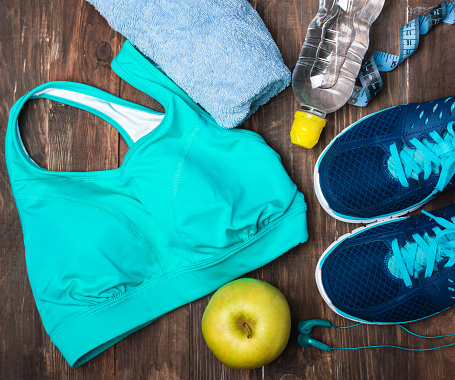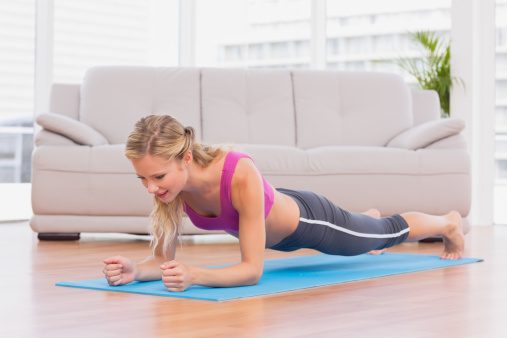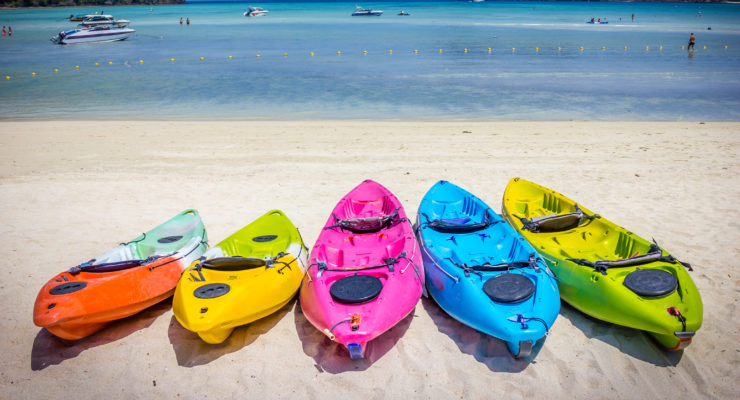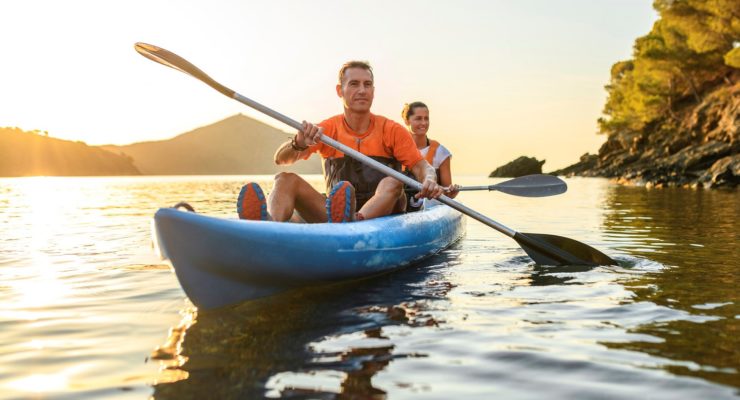5 (Fun!) Ways to Torch Calories in the Pool
Article posted in: Fitness
If you’ve got joint pain, hate being sweaty or just don’t like exercising on land, the pool may be a perfect solution to get moving.
Swimming has been shown to improve mood in both men and women, decrease pain from arthritis, decrease anxiety, help maintain the bone health of post-menopausal women, and cuts your risk of death in half compared to being inactive—not to mention that it’s a heart-pounding workout.
If you’re not a strong swimmer or your local fitness center doesn’t offer water aerobics or a similar class, visit your local pool and torch calories with these simple moves:
1. Swim short bursts to burn more fat.
You don’t have to be able to swim lap after lap after lap like Michael Phelps to get the benefits of a swim. In fact, interval training, where short bursts of activity are alternated with rest, can actually help you burn more fat than steady, slow- or medium-paced work.
If you’re only able to make it across the pool once without resting, that’s perfect: Cross the pool by any means necessary as quickly as you can, then rest for an equal period of time. Repeat this work-and-rest combo five times to start. Over time, increase the length of your work interval, decrease the length of your rest interval, or add more repetitions.
2. Tread water for the world’s simplest cardio workout.
You already know how to tread water, but you may not realize what an effective cardio workout it can be—because you don’t realize you’re sweating when you’re covered in water. Because you’re probably a little inefficient when doing it (because you’re used to being on land), the movement has been estimated to burn between 200 and 600 calories per hour—as much as walking or jogging two to six miles.
For a really simple workout, just tread water for as long as you can, trying to improve your total time with each session. To make it harder, do what Olympic water polo players do in practice—tread with your arms over your head, either held in the air or while holding a beach ball. This will concentrate all the work on your legs (and probably reduce how long you can tread significantly).
To mix things up and get the fat-burning results of interval training, try alternating 30 seconds of vigorous treading with 30 seconds holding onto the wall. Over time, try to increase how long you tread, or decrease how long you rest. Start by going for five total minutes, and try to work your way up to 20 or more.
3. Do a simple strength circuit.
Water makes landings lighter on your joints, but it also creates resistance when you’re trying to push yourself up. This simple, four-exercise circuit takes advantage of both to give you a strength workout you can do in waist-high water. To do it, perform each exercise for five reps before moving to the next exercise with minimal rest. After you finish all four exercises, rest for two minutes, and repeat. Try for two rounds of the circuit to start, and try to work your way up to five rounds over time.
Exercise 1: Bodyweight Squat
Stand in waist-high water with your feet about hip-width apart, toes pointed slightly out. Push your hips back to lower your torso, keeping your weight in the heels. Descend until your thighs are at least parallel to the bottom of the pool, or if you can, until your butt nearly grazes the ground. As you descend, think about pushing your butt backward and keeping your knees from going too far in front of your toes. As you press back up to standing, keep your weight in your heels, not on the balls of your feet.
Exercise 2: Curtsy Lunge
Stand with your feet about hip-width apart, hands on your hips or at your sides. Take a big step backwards and to the left with your right leg so that your right foot crosses over your left foot as if you were going to curtsy. Descend as you step until both of your knees are bent 90 degrees, or as deep as you can go. Keep your left knee tracking over your second toe, and don’t let your knee protrude in front of your toes. Press through the heel of your left foot back to start, and repeat the move on the other side, this time stepping back with your left foot. Go for five reps on each leg.
Exercise 3: High-Knee Raise with Calf Raise
Stand with your feet around shoulder-width apart. Bring your right knee up so that your thigh is parallel to the floor and you’re standing on your left foot. At the top, go up on your left toe. Now switch legs. Go for five reps on each side, trying to do this exercise pretty quickly.
Exercise 4: Underwater Ice Skaters
Stand on your right foot with your right knee slightly bent, and your left foot behind you, slightly off the bottom of the pool. Jump about three feet to the left, switching your feet while in the “air” so that you land in the opposite position—your left foot on the ground, knee slightly bent, and your right foot behind you. Jump back to the right. As you switch back and forth, you’ll look (and feel) a little like a speedskater. Do five reps on each side.
4. Grab a noodle.
Foam noodles shoot to the top of the water, which means pushing them back down can be an exercise challenge. Grab a pair of these floaters and try these three noodle moves.
Exercise 1: Noodle Straight-Arm Pulldown
Stand in shoulder high water with your feet shoulder-width apart, knees slightly bent. Hold the noodle with fully-extended straight arms in front of your shoulders, palms down. Roll your shoulders back to open up your chest. Maintaining and upright torso and without moving your legs or bending your elbows, push the noodle down towards your waist by pressing your hands down. Control the noodle as you return to the starting position, and repeat. Try for five reps to start. If this is too easy, try folding the noodle in half to create more drag, doing the exercise in the same way.
Exercise 2: Noodle “Dips”
Stand in chest-deep water with two noodles. Hold each one in the middle in each hand so that your hand is just below your chest on your side, palms in. In this position, your shoulders should be back and your chest puffed out so that your hands are in line with your torso. Keeping your shoulders back, press your hands (and the noodles) straight down until your hands are at your sides, fully extended with palms still facing in. Control the noodles as you raise your arms back up, and repeat for four reps to start.
Exercise 3: Noodle Knee Tucks
Get in water where you can’t stand and wrap the noodle under your chest and armpits so that you float. Straighten your legs so you’re like a pencil. Keeping your feet together, bend your knees to bring them up towards your chest while keeping your torso upright. Return your legs to start, and repeat. Start with five reps.
5. Play with the kids to teach them healthy habits.
Not that you needed science to tell you this, but in one study, swimming and playing together in a pool helped increase family connections. Also not surprising: Kids of parents who exercise are more active.
So give your kids (or nieces, nephews or grandkids) a healthy example and get a workout in, too: Get in the pool with them and play.
In the shallow end of the pool with little kids, try doing a high-knee run when the water is at or above your knee level. Because the water creates drag as you raise your legs, each step is harder than when running on the ground, and the impacts are reduced by the water as you come back down. The kids will love it because of the splashing. To do it, quickly raise your knees up so they’re at your waist or higher, one after the other. Try to go for high-intensity bursts of 15 seconds, then rest. Start with five or more rounds.
In deeper water, practice kicks on the side of the pool with younger kids who are learning to swim, or dive for pennies (or other trinkets) with those who are a little further along. And then bring the treading water workout back: Toss a ball in a circle or back and forth while treading—you’ll get bursts where you can only use your legs when you have the ball, alternating between harder and easier work for instant intervals.
*Always speak to your doctor before starting an exercise routine.











